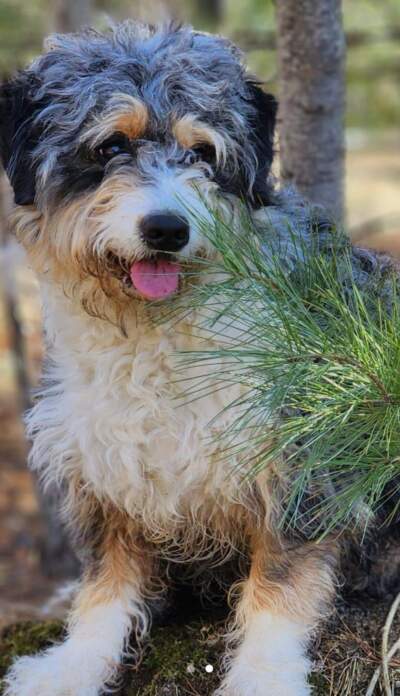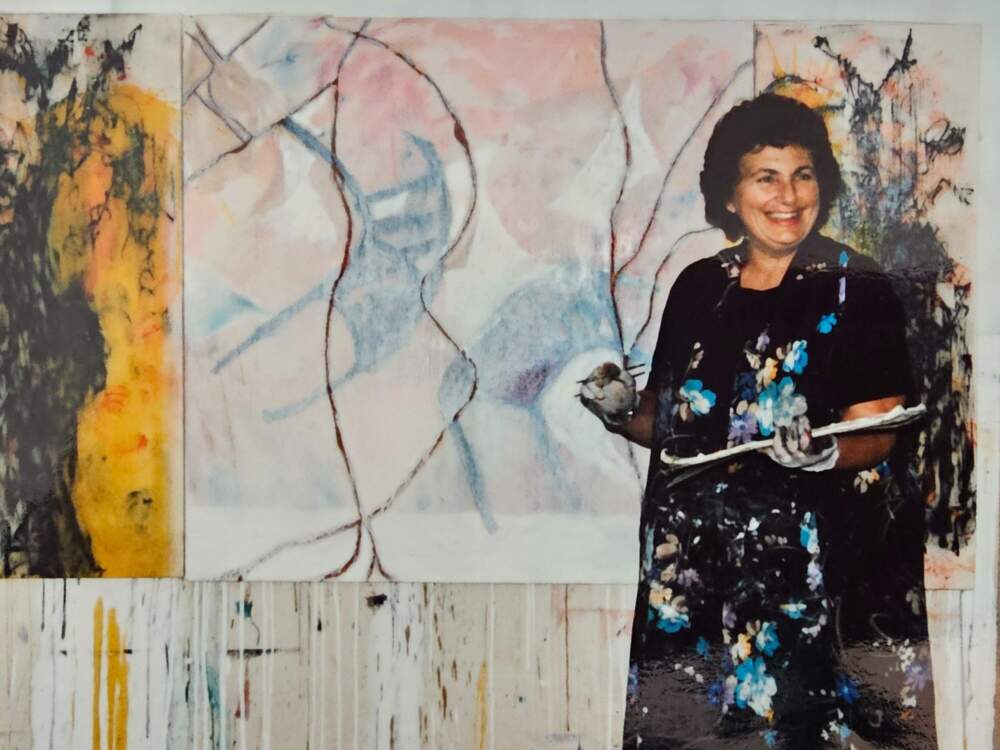Advertisement
Commentary
My mother never stopped loving the world

If I believed in reincarnation, I’d think that my late mother has come back in the form of my dog, Billie.
When Billie is feeling most energetic, she trots from one room to another, rearranging her possessions. She moves the marrow bone from her bed to ours; she transports the gutted, formerly plush dinosaur from its resting place under the couch to one beneath the bathroom rug.
But it’s not just her penchant for redecorating that so reminds me of my mother. No, it’s the spirit that Billie embodies in these moments. She moves with purpose, but even more, with anticipation, her nails tapping out an eager dance on our wooden floor. In that, she is just like my mom, who, even after she began to rely on a walker to safely get around, hurried into the next room, the next encounter, the next experience with similarly bright eyes and insatiable curiosity.
Six months or so before she died, I took my mother for the last time to a museum to see a Mark Rothko exhibit. I was drawn to the huge, striped canvases in which each bar of color melts into the next. But my mother asked to be parked in front of the two gleaming black canvases. She took their impermeability as a challenge — she was as determined to see how the darkness was made as she was to create surroundings that were full of light.

She’d taken up painting when my brother and I were young, then set it aside for decades when work and parenting consumed all of her time. Upon returning to art-making in her retirement, my mom had produced work that was wildly eclectic. You couldn’t look at any one painting or collage and recognize it as distinctively hers. Other than her frequent use of text — found or painted, single letters or torn scraps of magazine ads, instruction manuals, canned food labels, Chinese funeral paper, or peeling political posters— her art had no defining characteristic. You could only say that it — that she — was alert to what surrounded her. And to its possibilities.
Being outdoors with Billie has the same effect on me. She sniffs the tufts of grass outside our house to sense what other animals have traversed it overnight. When a bird alights from a nearby tree, she stops abruptly, front paw raised in a question mark, fascinated by its motion. She demands that I put the phone back in my pocket, cease my doom scrolling and pay attention to the ground beneath my feet.
Why am I sensing my mother so much today, not as she was, but personified in another natural form?
It’s not surprising that I would think of her on an evening when the “Yahrzeit” candle flickers in her memory as it has each of the past five years. And it’s common to imbue other animate and inanimate objects with human characteristics. After all, people are adept at pattern recognition. We’ll see anything resembling two eyes, a nose, and a mouth as a face. (Just ask the colon, dash and right parentheses.) Millions have seen the face of Jesus in the Shroud of Turin, the face of the Virgin Mary in a grilled cheese sandwich, and the face of Satan in the smoke billowing out from the South Tower of the World Trade Center moments after it was struck on 9/11. One frantic eBay bidder even shelled out $99,900 for a Cheeto that looked like Harambe, the Cincinnati Zoo gorilla.
Hungry for meaning, eager to see those who have inspired our love or faith — even our fear — we project their faces in the most unlikely places.
But I don’t see my mother’s visage in the soulful-eyed, button-nosed countenance of my dog. It’s not her features I recognize elsewhere in the natural world. It’s her spirit. Whether swimming, coasting, limping or lumbering, she moved through life with alertness. She didn’t sniff the air as a dog does, but like Billie, she lived with wide-open senses. That woman could smell lilacs a half a mile away, hear the rhythms in city traffic, taste the absence of spices, sense the age of a rug by the feel of its pile beneath her toes, and, above all, see possibilities — whether on a canvas, in a lump of soapstone or in the eyes of someone too shy to speak.

In that way, she is just like Billie, whose joyfully swishing tail was on full display this morning as she snuffled the base of a giant tree. Its gnarled trunk reminded me of my mother’s aged body, furrowed and crooked. There’s no literal resemblance, but the beech’s uncanny reach towards both earth and sky, its grace despite its knobby, arthritic limbs — those qualities embody my mother in her last years.
Or maybe they just evoke her. After all, does a dog or a tree really have an intrinsic, recognizable essence, or is it just a projection? Does the soul exist at all, or is it simply a product of my meaning-making machinery, fueled by longing?
Because the truth is that I still miss my mother — not so much in the form of wanting her present, but more in wishing she could experience something that I know she would have appreciated. That was her greatest gift to herself and to her children: Even in the face of things she deplored — mounting prejudice, pettiness and the destruction of lives and the planet — she never stopped loving the world.
Maybe when I lapse into these metaphysical reveries about souls and reincarnation, I’m really just seeing what is still to be cherished — the dogs and trees and oily puddles that mirror what passes above them in swirling, rich colors — just as my mother did. Perhaps what is passed on to and through us after a loved one’s death is the ability to notice.
That’s more than enough. And I’m certain that Billie — who now snores at my feet, twitching as she dreams of darting rabbits and the heady scent of pine needles — Billie would agree.
